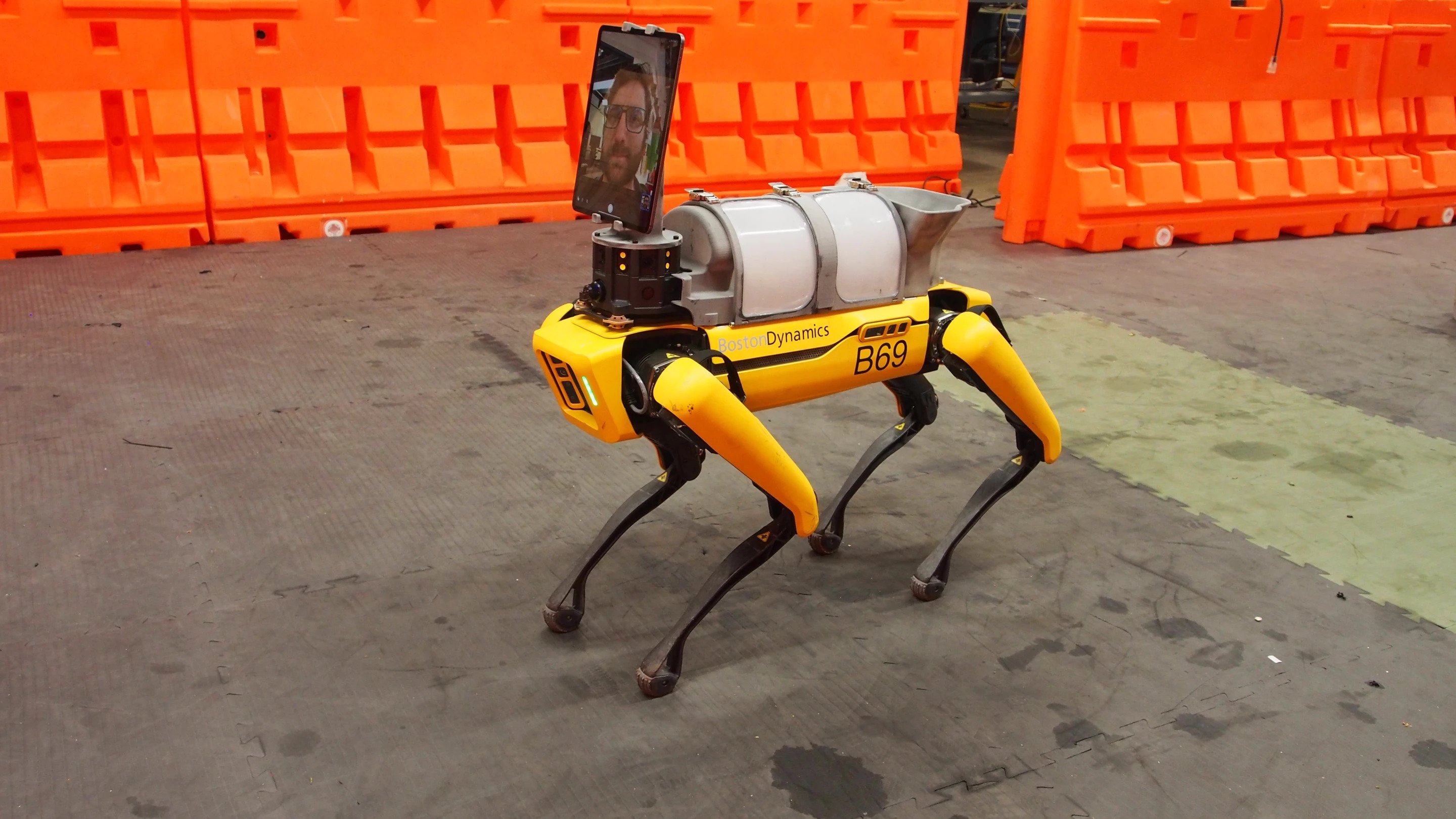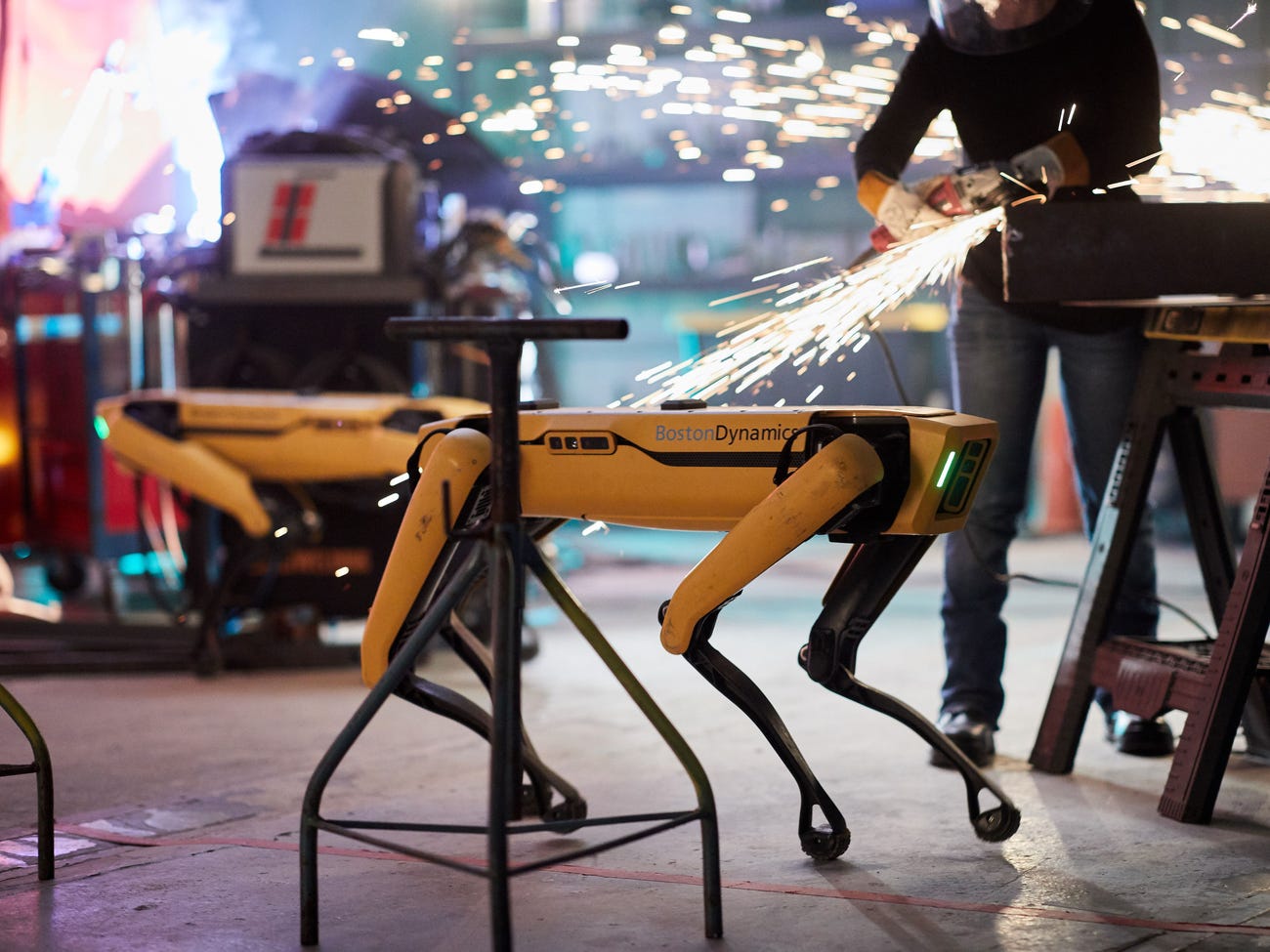Boston Dynamics' Robot "Dog" Joins The Fight Against COVID-19
Language
Reading Level
Listen to Article

While the novel coronavirus is dangerous for everyone, it is particularly so for the first responders who are being exposed to the illness daily. In the US alone, almost 5,500 nurses, doctors, and other healthcare professionals have been infected with COVID-19. Of these, dozens have succumbed to the disease. Now, hospital workers worldwide may get some reprieve thanks to Spot, a semi-autonomous four-legged robot developed by Waltham, Massachusetts-based robotics company, Boston Dynamics.
“Starting in early March, Boston Dynamics started receiving inquiries from hospitals asking if our robots could help minimize their staff’s exposure to COVID-19,” the company writes in a blog post. “One of the hospitals that we spoke to shared that, within a week, a sixth of their staff had contracted COVID-19 and that they were looking into using robots to take more of their staff out of range of the novel virus.”

In response, the company reconfigured the 3-foot tall, 70-pound robot to operate as a mobile telemedicine platform, enabling healthcare providers to determine a patient's condition remotely. The first four-legged "medical practitioner" was deployed to the Brigham and Women’s Hospital of Harvard University on April 9, 2020. Equipped with an iPad "face" and a two-way radio that allows for real-time conversation, Spot helps doctors to speak to patients without coming in contact with them.
“With current protocols at local hospitals, patients suspected to have COVID-19 are asked to line up in tents outside to answer questions and get initial assessments for temperature. This process requires up to five medical staff, placing those individuals at high risk of contracting the virus,” Boston Dynamics explains. “With the use of a mobile robot, hospitals are able to reduce the number of necessary medical staff at the scene and conserve their limited PPE [personal protective equipment] supply.” The company says the doctors can even use Spot to talk to patients from the safety of their own homes.
While Boston Dynamics does not have enough "Spots" to lend to hospitals worldwide, they believe any robot can do the job. “With the deployment of our first healthcare-focused robot, we’re open-sourcing all of our work to empower any mobile robotics platform to leverage the same hardware and software stack that we’ve developed to help frontline healthcare workers,” the company says. “None of the services... are reliant on Boston Dynamics hardware or software. In many instances, we imagine wheeled or tracked robots may be a better solution for these applications.”

Though Spot has already proved extremely helpful, the robotics manufacturer believes it can be even more so. The engineers are currently working on "teaching" the robot to perform tasks like temperature checks and respiratory rate calculations using thermal camera technology. The company is also developing new technology that will allow Spot to aid in the disinfection or decontamination of hospitals as well as other public areas.
“By attaching a UV-C light to the robot’s back, Spot could use the device to kill virus particles and disinfect surfaces in any unstructured space that needs support in decontamination — be it hospital tents or metro stations,” the company says.
Though this is Spot's first healthcare assignment, Boston Dynamics has been beta-testing the customizable robot for several other hazardous tasks since late 2019. These include helping Boston police detect bombs and assisting miners in troubleshooting problems from a safe distance.
Resources: Theverge.com, Wired.com